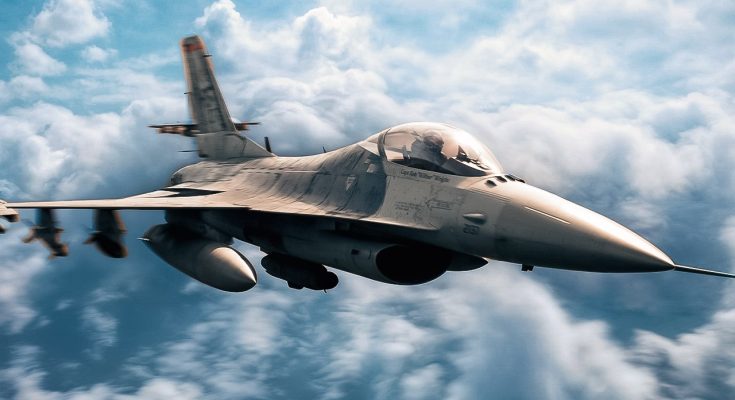The phrase “When F-16 Falcons Ate Hawks for Breakfast” likely refers to a famous moment in air combat history, specifically a dramatic event where the F-16 Fighting Falcon, a versatile and agile multirole fighter, outperformed the McDonnell Douglas F/A-18 Hornet, nicknamed “Hawk,” in a series of air combat training exercises. This metaphorical “breakfast” suggests that the F-16 decisively dominated its competition, asserting its superiority in a key aspect of aerial combat.
The Rivalry: F-16 vs. F/A-18 Hornet
The F-16 Fighting Falcon and the F/A-18 Hornet are two of the most renowned fighter jets of the 20th century. The F-16 was developed by General Dynamics (now Lockheed Martin) for the U.S. Air Force in the late 1970s, designed for air superiority and ground attack missions. Meanwhile, the F/A-18 Hornet was developed by McDonnell Douglas (now Boeing) in the late 1970s for the U.S. Navy, focusing on carrier-based operations and versatility in both air-to-air and air-to-ground missions.
While both jets proved their mettle in various roles, a key difference between them was in the operational environments for which they were designed. The F-16 was a land-based fighter, optimized for high-speed engagements, air superiority, and precision strikes, while the F/A-18 was a carrier-based fighter, focused on versatility, durability, and performing multiple roles, such as air-to-ground strike and anti-shipping missions.
This distinction meant that when the two aircraft were put head-to-head in training exercises, certain advantages and weaknesses would come into play, leading to surprising outcomes in specific scenarios.
The Combat Training Incident
The term “eating Hawks for breakfast” comes from a specific set of dogfighting training exercises in the early 1990s, during which the F-16 often outperformed the F/A-18 in simulated aerial combat. These exercises, often called Red Flag or Dissimilar Air Combat Training (DACT), pit various fighter aircraft against one another to hone skills and tactics in a controlled, but competitive environment.
In these exercises, the F-16’s superior agility, lighter weight, and higher thrust-to-weight ratio gave it an edge in close-range combat, where rapid maneuvering and speed are critical. The F-16’s single-engine design and relatively small frame allowed it to perform more aggressively in dogfights, particularly at high speeds and in tight turns, which are crucial elements in aerial battles.
On the other hand, the F/A-18 Hornet, while an incredibly capable aircraft in its own right, was designed with a more balanced approach to multirole operations. The Hornet’s strengths lay in its versatility, with excellent carrier capabilities and the ability to switch between air-to-air and air-to-ground roles. However, its slightly heavier airframe and dual-engine setup made it less agile than the lighter, single-engine F-16 in close combat.
As a result, when these two aircraft faced off in training, the F-16 often had an advantage in one-on-one dogfighting scenarios. The F-16’s performance in tight turns and its ability to change direction quickly were key factors that allowed it to “eat” the Hornets in simulated aerial engagements, leading to the iconic phrase of the F-16 “eating Hawks for breakfast.”
Why the F-16 Dominated in This Context
Several factors contributed to the F-16’s dominance in these exercises:
- Maneuverability: The F-16 was built with agility in mind. Its frameless canopy, lightweight design, and advanced flight control systems made it an incredibly nimble fighter, capable of tight turns and rapid changes in direction that proved lethal in dogfights.
- Thrust-to-Weight Ratio: The F-16 had a higher thrust-to-weight ratio than the F/A-18, which meant it could accelerate more rapidly and perform more aggressive maneuvers during combat.
- Weapons and Avionics: The F-16 was equipped with advanced targeting systems and highly precise weapons, allowing it to engage targets quickly and effectively in both air-to-air and air-to-ground combat, further elevating its tactical advantages.
- Pilot Training: U.S. Air Force pilots flying the F-16 were specifically trained for high-intensity dogfighting scenarios. This specialized training, combined with the aircraft’s unique advantages, often resulted in the F-16 coming out on top in one-on-one air combat.
The Importance of the Incident
While the “F-16 eating Hawks for breakfast” moment is often remembered as an example of the F-16’s supremacy in certain types of air combat, it is important to remember that both the F-16 Fighting Falcon and the F/A-18 Hornet are incredibly capable and effective fighter aircraft, each excelling in different operational environments.
The F/A-18 Hornet’s carrier-based capabilities, ability to perform in both air-to-air and air-to-ground missions, and adaptability in a range of combat scenarios made it an invaluable asset to the U.S. Navy. The F-16, on the other hand, with its lightweight design, agility, and air superiority capabilities, excelled in high-speed dogfights and scenarios that demanded exceptional maneuverability and precision.
In the broader context of military aviation, the rivalry between the F-16 and the F/A-18 exemplifies the trade-offs in designing fighter aircraft for different needs—land-based versus carrier-based operations—and underscores the importance of specialized training and tactics to maximize the potential of each platform.
Legacy of the F-16
The phrase “When F-16 Falcons Ate Hawks for Breakfast” encapsulates an era when the F-16 Fighting Falcon earned its reputation as one of the most capable multirole fighters in the world, regularly outperforming its competition in simulated air combat. This legacy continues today, as the F-16 remains a highly effective platform in the U.S. Air Force and many allied nations, still flying high in various air forces around the globe, a testament to its incredible performance and versatility.



